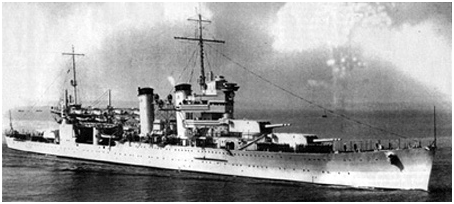 |
The song was written by Frank Loesser. According to the song a chaplain was with some fighting men who were being attacked by the Japanese at Pearl Harbor. He was asked to say a prayer for the men who were engaged in the firing at the on-coming Japanese planes. The chaplain; the song went on to infer, put down his bible, manned one of the ship's gun turrets and begin firing back, saying, "Praise The Lord and pass the ammunition". Now; however, there are now facts available setting the story straight. According to the writer, Jack S. McDowall, through the years the lyrics of the song have generally credited "a chaplain" manning the gun turrets of a ship, while under attack. "This was not true". says, McDowell. For some time, long after the attack at Pearl Harbor, stories and reports continued to pop-up about the incident, involving a chaplain who was to have uttered the now famous words, "Praise the Lord and pass the ammunition." |
These stories eventually made their way through the servicemen back to the press. The press, as McDowell noted, . . . led some writers erroneously to identify other chaplains as authors of the phrase.
Nonetheless, the real Chaplain, Howell Forgy, aboard the U.S.S. New Orleans (Heavy Cruiser); during the Japanese attack, was that Chaplain. He was a Lieutenant (j.g.) on that Sunday morning 7 December, 1941.

Another Lieutenant who had been in charge of an ammunition line on the USS New Orleans during the attack remembered......
"I heard a voice behind me saying, Praise the Lord and pass the ammunition. I turned and saw Chaplain Forgy walking toward me along the line of men. He was patting the men on the back and making that remark to cheer them and keep them going. I know it helped me a lot, too", he said.
Edited from the ships official after action report for 7 December 1941.
U.S.S. New Orleans was moored at Berth 16, Navy Yard Pearl Harbor undergoing engine repairs. The ship was taking power and light from the dock. There was no ship's power available. Offensive measures -- NONE. Defensive measures: At 0757 sighted enemy planes "dive bombing" Ford Island and went to General Quarters immediately. At 0805 sighted enemy torpedo planes on port quarter flying low across our stern. Rifle fire and Pistol fire was opened from our fantail as the first planes flew by to launch their torpedoes at the battleships. This ship saw several planes launch their torpedoes headed in the direction of the battleships. Our 1.1/75 battery and Machine Guns aft were manned in time to actually fire at three or four enemy planes passing our stern. About 0810 all batteries, except the 8" battery, were in action engaging such enemy planes a presented themselves as targets. Damage to Enemy and own ship: The area around berths 14, 15, 16, 17, 18 & 19 at the Navy Yard was subjected to a dive bombing attack by approximately ten enemy planes. This attack was turned aside by the combined fire of the batteries of the U.S.S. Honolulu and U.S.S. New Orleans. Several enemy planes were believed heavily damaged during this attack. Whether or not these planes crashed is not definitely known. The turning away of this attack undoubtedly saved the ships of this area from more damage. Three bombs were dropped, one falling ahead of and another astern of the U.S.S. Rigel. These two failed to explode. The third bomb landed midway between the Rigel and New Orleans, exploding and causing some damage from flying fragments to the hulls and superstructure of the two vessels. The New Orleans damage due to flying fragments consisted of numerous jagged holes in the hull and superstructure varying in areas from 1 to 6 square inches in size. |